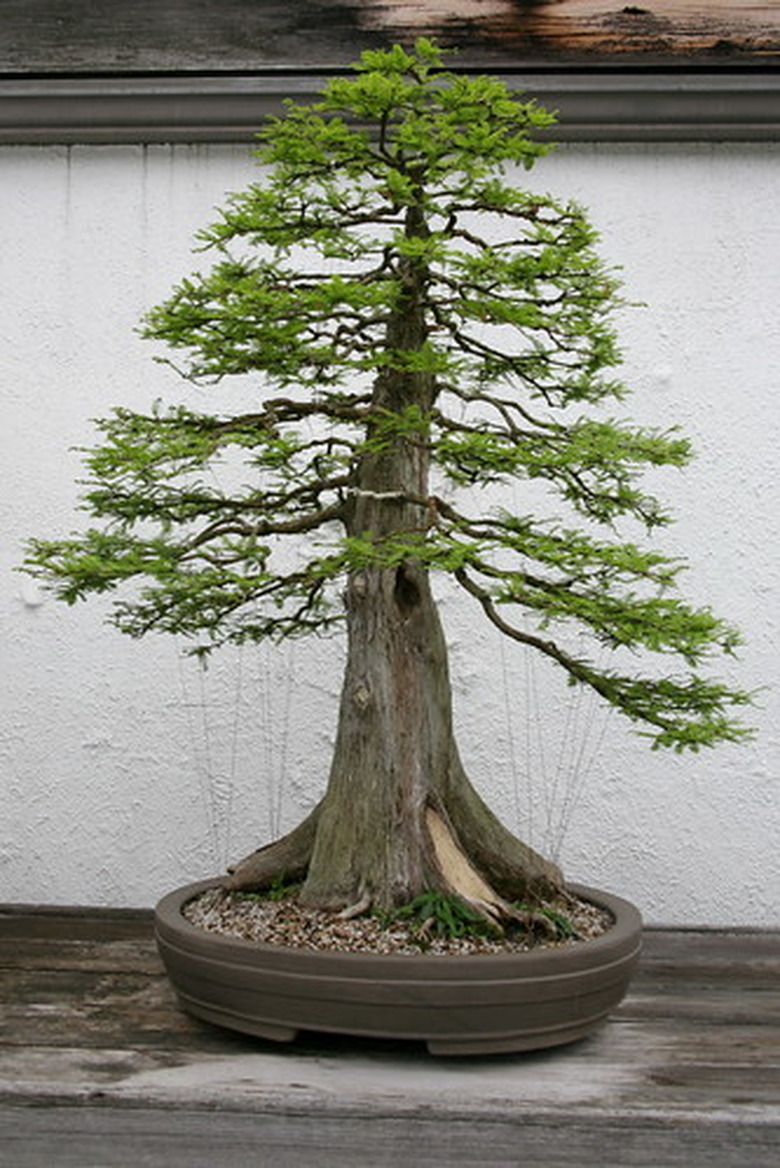Hinoki Cypress Problems
The Hinoki Cypress (Chamaecyparis obtuse) is a slow-growing conifer native to central Japan, where its lemon-scented, rot-resistant timber is used for noh theaters, temples, shrines, palaces and baths. Dwarf varieties are highly prized by bonsai growers who admire the fern-like branches that whorl and gently droop. It is judged to be easy to grow, but problems occasionally occur.
Root Rot
The Hinoki Cypress needs a lot of water when it is actively growing, but it is also susceptible to root rot. The answer is to make sure that the soil doesn't dry out but is not waterlogged either. You can mist the foliage and allow it to dry between watering. It's preferable to water your Hinoki Cypress in the morning to early afternoon and let it stand in the water overnight.
- The Hinoki Cypress (Chamaecyparis obtuse) is a slow-growing conifer native to central Japan, where its lemon-scented, rot-resistant timber is used for noh theaters, temples, shrines, palaces and baths.
- The Hinoki Cypress needs a lot of water when it is actively growing, but it is also susceptible to root rot.
Brown Needles
If your interior needles are turning brown but the ones on the outside are still green, the problem could be that your interior needles aren't getting enough light. If your Hinoki Cypress was grafted onto the trunk of another tree and you leave it outside, it's possible for it to freeze at the graft union. This happens to roses and other plants.
Bagworm
The common bagworm, Thyridopteryz ephemeraeformis, can infest your Hinoki cypress. The larvae of these caterpillars can emerge from their camouflaged bag and eat your plant causing dieback and dead areas.
First, hand-pick the silk bags containing bagworm larvae bags. If you still have problems, spray BT (Bacillus thuringiensis) on the plant. BT is a bacterium that will kill the young larvae.
- If your interior needles are turning brown but the ones on the outside are still green, the problem could be that your interior needles aren't getting enough light.
- If you still have problems, spray BT (Bacillus thuringiensis) on the plant.
As a last resort, spray your plant with one of the numerous insecticides registered by the EPA to control bagworm. Approval for bagworm will be listed on the label. There are EPA restrictions on the use of insecticides that include Bendiocarb, cyfluthrin, fluvalinate, permethrin, or trichlorfon. BT and commercial insecticides will have instructions on the label.
Juniper Scale
The Juniper scale, Carulaspis juniper, is a tiny insect no more than 1/16 inch in size that can infest and eat the needles of a Hinoki cypress virtually unseen. Newly hatched, the juniper scales are bright yellow, fading to a tan color. They are ordinarily found on the underside of the foliage. Infected foliage will be off-color at first, then lose its luster. If you don't control juniper scale, the foliage of your plant can turn brown and branches die. Remove foliage that is heavily infested.
- As a last resort, spray your plant with one of the numerous insecticides registered by the EPA to control bagworm.
- The Juniper scale, Carulaspis juniper, is a tiny insect no more than 1/16 inch in size that can infest and eat the needles of a Hinoki cypress virtually unseen.
If your plants are outdoors, introduce lady beetles or dusty wings to the plant. They are natural predators that will eat the scale. Apply horticultural oil in the early spring. Horticultural oil, available in garden supply stores, kills insects by suffocating them.
Tips
Prune your bonsai by pinching it with your hands. Using shears can cause the foliage to turn brown.
Don't use a pot that is too large. That will make too much water available to your plant.
- If your plants are outdoors, introduce lady beetles or dusty wings to the plant.
